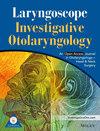A Novel Hybrid Solution for Hearing Impairments
Abstract
Objective
Conventional hearing aids (HAs) and bone conduction devices have limitations in providing clear and audible sound in some cases and situations. The clinicians' primary purpose is to enhance audibility and intelligibility in hearing, offering a solution for users dissatisfied with current hearing technologies. This study proposes a novel hybrid system and investigates its performance compared to HAs.
Methods
This pilot study compares the performance of a novel hybrid system with traditional HAs. Ten HA users underwent a prospective intra-subject study at a tertiary hearing center. Audiological tests measured unaided and aided thresholds across specific frequencies in two conditions (HAs and Hybrid system). Furthermore, subjective outcomes were assessed via a questionnaire on the perceptual consequences.
Results
The patient's mean age was 36 years. The mean PTA4 values were 63.75, 40.74-, and 37.88-dB HL in the unaided, HA-aided, and Hybrid-aided groups, respectively. The speech reception thresholds varied significantly between the unaided and (i) aided using HA (p = 0.0009) and (ii) aided using the Hybrid solution (p = 0.0001). There is no significant variation between HA and Hybrid solutions (p < 0.4195). The mean SDS at 65 dB using the HA and Hybrid solution was 87% and 90%, respectively.
Conclusion
The proposed Hybrid system, combining conventional air-conduction HAs with bone-conduction devices, offers promising improvements in sound quality and user satisfaction. Further studies are essential to fully understand the Hybrid system's capabilities and evaluate its ability to avoid the dissatisfaction that could result from HA in some instances.
Level of Evidence
Prospective cohort study (Level 3).


 求助内容:
求助内容: 应助结果提醒方式:
应助结果提醒方式:


